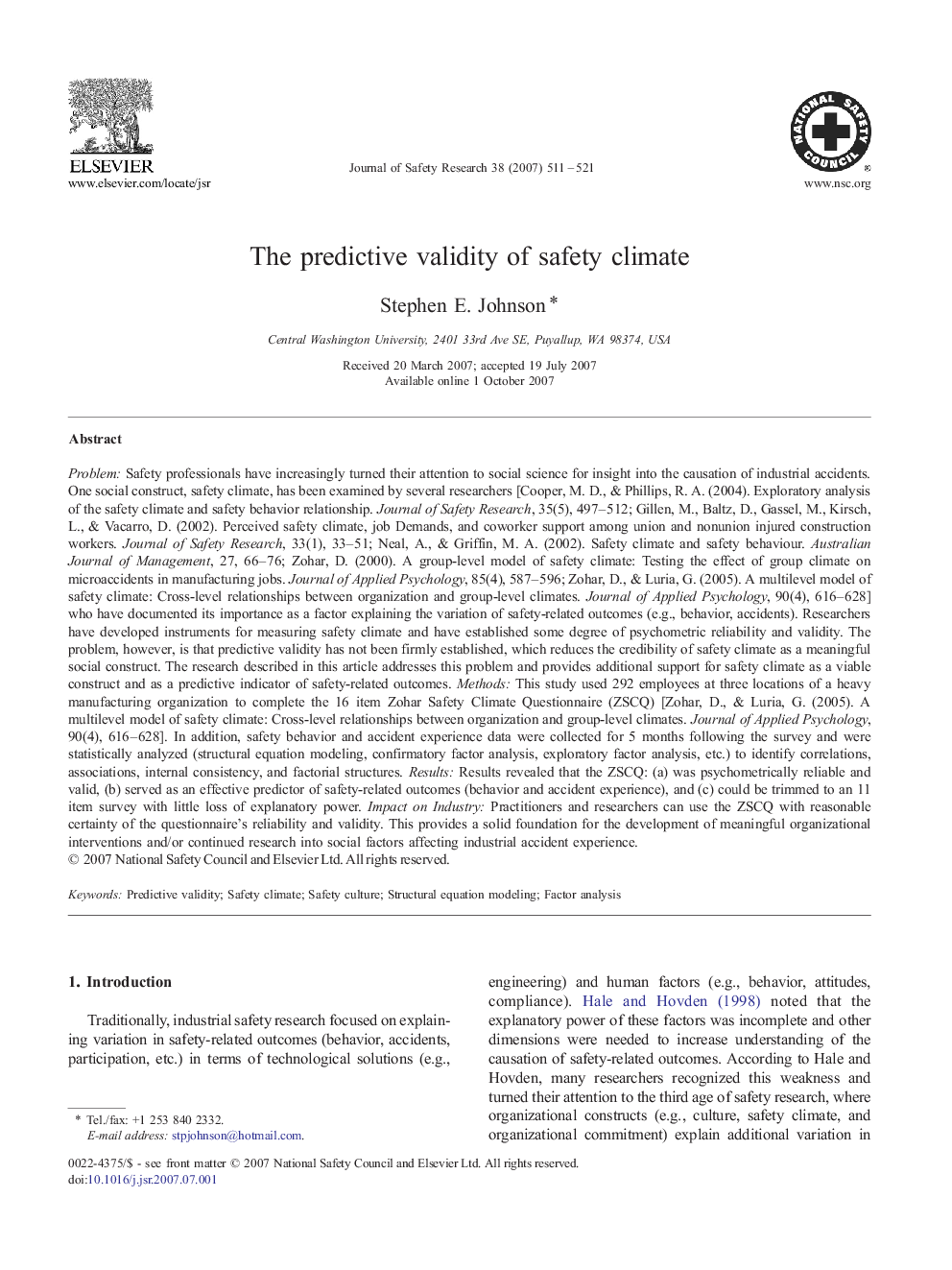| Article ID | Journal | Published Year | Pages | File Type |
|---|---|---|---|---|
| 587745 | Journal of Safety Research | 2007 | 11 Pages |
ProblemSafety professionals have increasingly turned their attention to social science for insight into the causation of industrial accidents. One social construct, safety climate, has been examined by several researchers [Cooper, M. D., & Phillips, R. A. (2004). Exploratory analysis of the safety climate and safety behavior relationship. Journal of Safety Research, 35(5), 497–512; Gillen, M., Baltz, D., Gassel, M., Kirsch, L., & Vacarro, D. (2002). Perceived safety climate, job Demands, and coworker support among union and nonunion injured construction workers. Journal of Safety Research, 33(1), 33–51; Neal, A., & Griffin, M. A. (2002). Safety climate and safety behaviour. Australian Journal of Management, 27, 66–76; Zohar, D. (2000). A group-level model of safety climate: Testing the effect of group climate on microaccidents in manufacturing jobs. Journal of Applied Psychology, 85(4), 587–596; Zohar, D., & Luria, G. (2005). A multilevel model of safety climate: Cross-level relationships between organization and group-level climates. Journal of Applied Psychology, 90(4), 616–628] who have documented its importance as a factor explaining the variation of safety-related outcomes (e.g., behavior, accidents). Researchers have developed instruments for measuring safety climate and have established some degree of psychometric reliability and validity. The problem, however, is that predictive validity has not been firmly established, which reduces the credibility of safety climate as a meaningful social construct. The research described in this article addresses this problem and provides additional support for safety climate as a viable construct and as a predictive indicator of safety-related outcomes.MethodsThis study used 292 employees at three locations of a heavy manufacturing organization to complete the 16 item Zohar Safety Climate Questionnaire (ZSCQ) [Zohar, D., & Luria, G. (2005). A multilevel model of safety climate: Cross-level relationships between organization and group-level climates. Journal of Applied Psychology, 90(4), 616–628]. In addition, safety behavior and accident experience data were collected for 5 months following the survey and were statistically analyzed (structural equation modeling, confirmatory factor analysis, exploratory factor analysis, etc.) to identify correlations, associations, internal consistency, and factorial structures.ResultsResults revealed that the ZSCQ: (a) was psychometrically reliable and valid, (b) served as an effective predictor of safety-related outcomes (behavior and accident experience), and (c) could be trimmed to an 11 item survey with little loss of explanatory power.Impact on IndustryPractitioners and researchers can use the ZSCQ with reasonable certainty of the questionnaire's reliability and validity. This provides a solid foundation for the development of meaningful organizational interventions and/or continued research into social factors affecting industrial accident experience.
